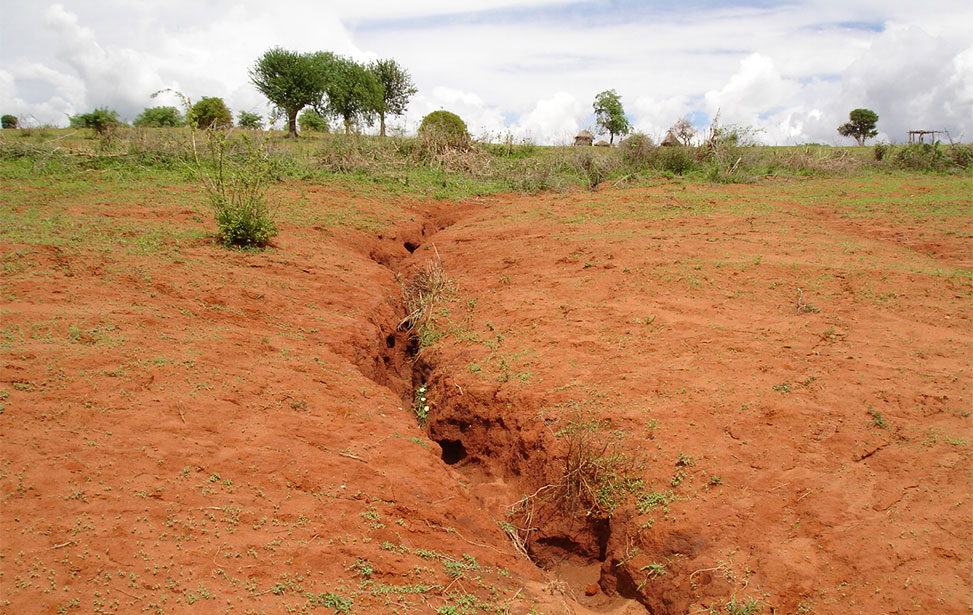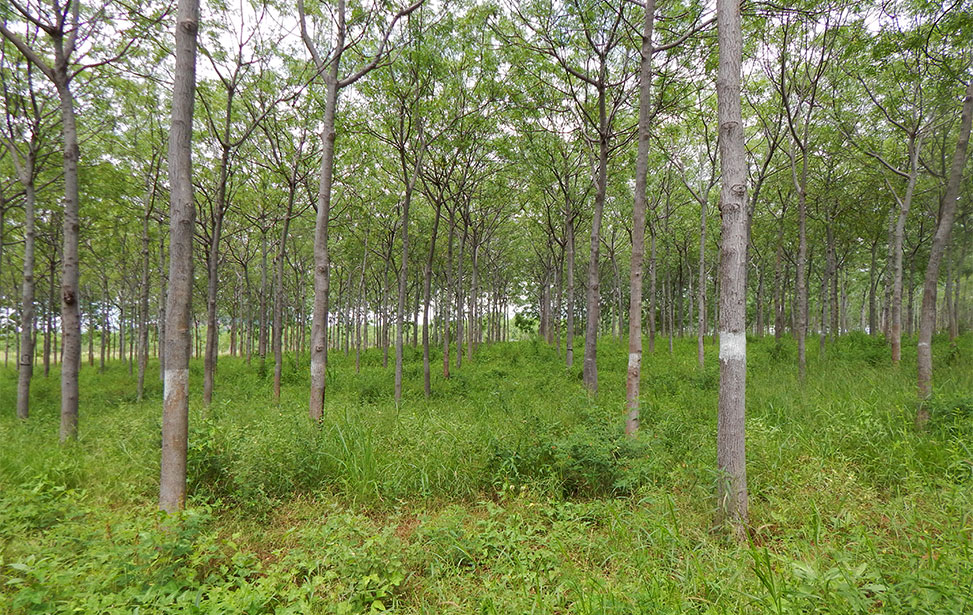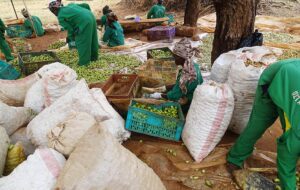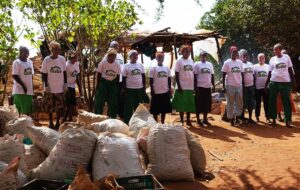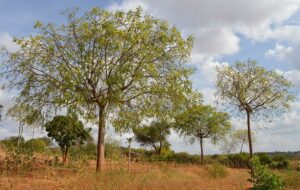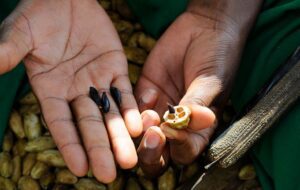Kiambere plantation is located in Kitui county, with a gentle topography in a semi-arid climate with erratic and unreliable rainfall. The plantation covers an area of approximately 300 hectares and is situated at the shores of Kiambere dam, one of the 7-Forks hydroelectric power dams. Soils in the area are predominately sandy loams with 70 to 80 percent of sand content, meaning they are not only highly erodible, but also have high percolation potential. The latter means that rain can easily penetrate into deeper soil layers, provided the soil surface favors it. The original natural vegetation of the area is Commiphora-Acacia bush, with several other species and occasional big trees, of which Adansonia digitata (baobab) is the most conspicuous. Melia volkensii (mukau) and Acacia senegal (gum arabic) belong to this vegetation type. For better insight of the plantation’s ecological benefits, a description of the site before and after establishment of the plantation has been detailed below.
Before the plantation
Prior to the plantation establishment, there was massive soil erosion on the land caused by anthropogenic activities such as cultivation and charcoal burning, with the soil carried to the adjacent Kiambere lake. This caused siltation affecting the storage capacity of the lake, and its potential to generate electricity.
Poor soil management and habitat destruction undermine the ability of drylands biodiversity to perform nutrient recycling, and water storage and filtration services. On severely degraded land — devoid of biodiversity — as little as 5 percent of total rainfall may be used productively.
Post plantation establishment
Plantation establishment of mukau in Kiambere started in 2007 with a pilot compartment, and since then 300 hectares of forest have been established. The plantation counts with 3 species namely Azadirachta indica (neem), gum arabic, and mukau as the dominant species.
Soil erosion control and biodiversity
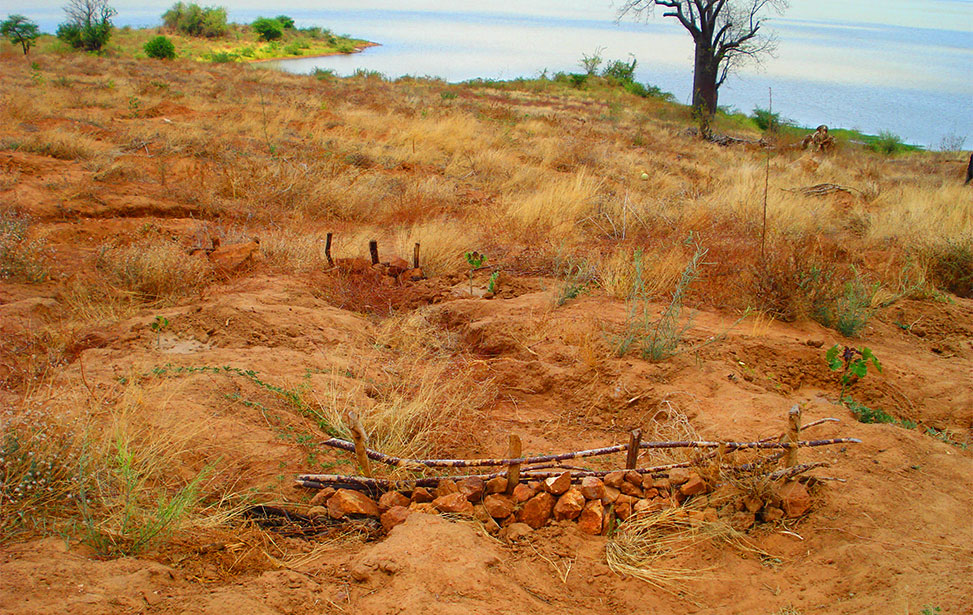

Soil erosion was greatly reduced, partly because of the tree planting itself, and partly because of establishment of thousands of little check-dams in gullies to reduce waterflow and speed of run-off. These check-dams are easy to build and consist of local materials like stones and wood. The gullies were colonized by grasses and weed and stopped further erosion and washing out of topsoil. This undergrowth is present under the whole plantation, and has stimulated presence of insects and rodents, in turn increasing presence of birds, herbivores like small antelopes, and predators like snakes. Due to 24/7 protection, the resident fauna is kept in peace, no poaching or destruction takes place, and biodiversity is much higher than before.
The lake itself harbors a population of hippos, crocodiles, and numerous species of waterfowl, including egrets and cormorants. Pelicans use the lake during migration. Research has confirmed that man-made plantations can be as effective as natural forests in retaining run-off and reducing damages from flooding. The grass is also used by the neighboring community for fodder during dry periods. Grass, fallen leaves, and in general dead plant material cover the soil, so that soil life proliferates; and the soil surface is soft, which is good for penetration of rainwater.
Carbon sequestration
Forests sequester carbon by capturing carbon dioxide from the atmosphere and transforming it into biomass through photosynthesis. Sequestered carbon is then accumulated in the form of biomass, deadwood, litter, and in forest soils. Kiambere plantation covers 300 hectares of land, which shows its capacity to act as carbon sink.
Water retention and mitigating effects of drought
The plantation is in an arid and semi-arid land (ASAL) area where water scarcity is common. Forest water retention plays an important role in buffering the effects of heavy rainfall and droughts. Forests can soak up excess rainwater and release the water in the dry season, thereby providing clean water and mitigating the effects of droughts. This is reflected in the creation of a micro-climate with higher relative humidity than the neighboring areas, which are under cultivation during the rainy season, but really dry the remainder of the year.
